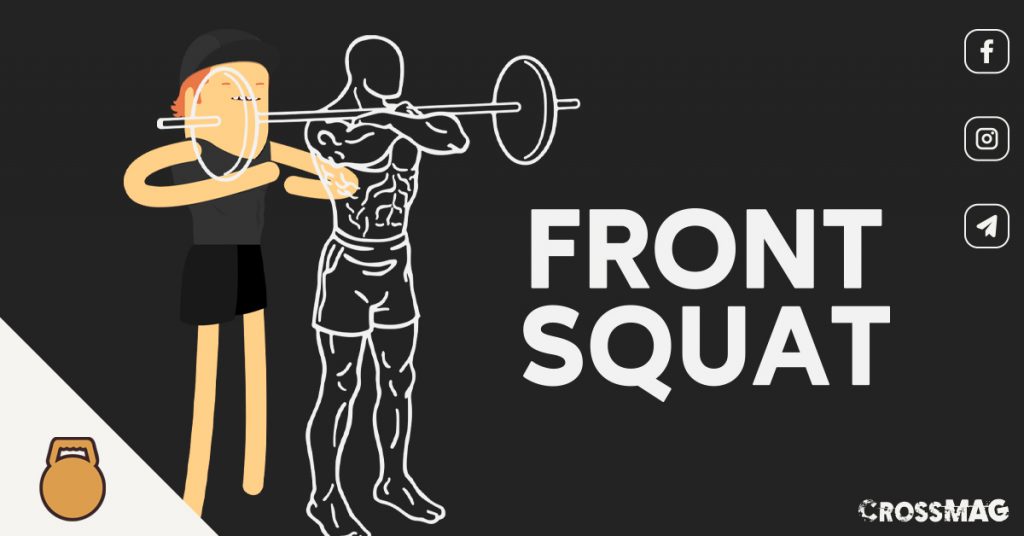There are pure movements force. Hypertrophy movements. Mobility movements.
And then there is the front squat: that's all.
Yes ok, there are also movements whose usefulness is still to be demonstrated: how to do goblet squats in balance on the bosu ball. But let's talk about it another time (promised).
Index
Front squats VS back squats
Yet, compare back and front it is like comparing - in fact - the giant with an elegant gymnast. The first is pure strength. The second is a concentrate of strength, mobility, balance, elegance.
For the purposes of this article, the comparison stops here.
The front squat reveals the weaknesses
And there is nothing (or almost) that does not reveal. To say, try to do front squat with a minimum load, and find out if you have problems with
- Chest extension (difficulty keeping chest up)
- Unbalance between the front and rear masses (ergo: you did bench and press, but you neglected pull up and rowers)
- Balance of the shoulder girdle
- Core weak
- Mobility in the front rack position
- Lack of strength in the buttocks and quadriceps
- Hip mobility / flexibility
This because performing the front squat requires a combination of factors where, if I'm one, it doesn't work, you're screwed. Here is the main difference with the back squat - in which in the end you just have to load, and keep an eye on your back and knees, and technical errors can be put in second, if not third.
To do the front squat you need mobility, strength, developmental symmetry.
Don't you have them?
Do front squats.
"A few things" that the front squat enhances
Buttocks and quadriceps
Depth e range, what a pleasure. There front position of the barbell causes the pelvis to be pushed back - it is a matter of balance: in this way the tension on the knee ligaments is reduced, and you can go down more. The lower part of the abdomen can have its say, and the hip flexors are prevented from "blocking" the movement.
Core strength
Il core it is the basis of all the functional that you will do. By god, a core developed you need it in every discipline, and especially in life.
From pulling up the cartons of the move, to doing the new detachment PR. To beat up your rival (inside the MMA ring, of course).
A stable core in turn stabilizes the movements, protects the spine, allows the transfer of energy from the lower to the higher districts of the body (try doing one push press or thruster if you don't have a steel core)
The front squat is a movement that it really depends on the ability to keep the core fixed. What does it mean? That by training it, the core will also train.
The front rack position
It is the second parameter to train to perform a good front squat. If you don't have chest mobility, you will not be able to keep your back straight during the movement.
- you place it on the ground
- you lie on it with the middle part of your back
- relax your breath and arch your back until your arms, held above your head, touch the ground
- hold the position for 30 seconds
- move the foam roller up a couple of cm
And repeat the sequence until the roller is almost at the shoulders.
Stronger vertical position
If you are not stable with your back, the weight will take you to the ground as you go down into the bottom position. You'll have to drop it. This is why the knees, during the front rack, bend more than the hips (the hinge movement typical of the squat is not as pronounced as in the back squat).
Don't be afraid though: working on the vertical position in the front squat will allow you to improve the position also in the back squat, where too high loads correspond, in the athlete who does not hold them, the bow forward.
In short, this front squat!
In short, this front squat brings improvements on the move, ability to stabilize even a heavy weight and increases in strength that are transferred to the great to all other CrossFit® movements and not only that: the front squat is the basis of weightlifting Olympic, right?

